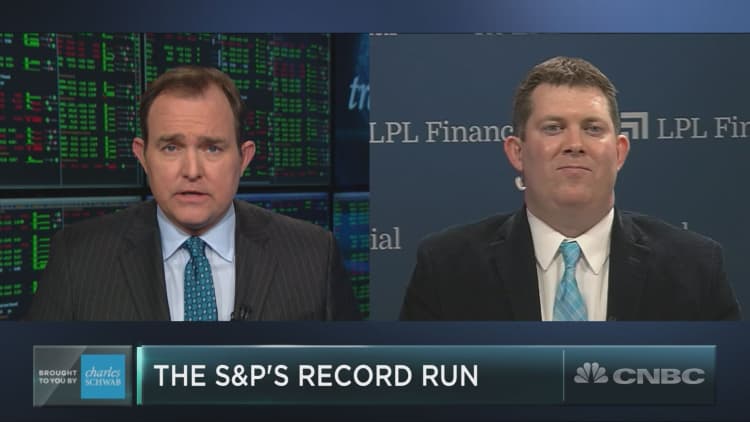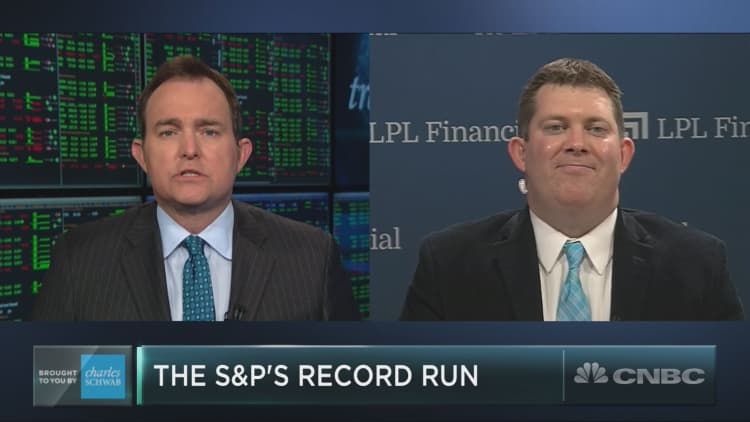
The is trading in a way it hasn't for decades.
The benchmark index has closed at records 14 times during the past 18 trading days. That's its most records in any month since June 1955, according to Ryan Detrick, senior market strategist at LPL Financial.
But, that's not the only impressive stat to marvel at. Check out this laundry list of achievements provided by Detrick. The S&P 500 has risen 7 percent this year and is on track for one of the strongest January performances ever and its best since 1989. Last week, it hit its longest time in history spent without a 5 percent correction. Let's also not forget the S&P 500 closed at yet another record high on Friday.
The equity market's year-to-date performance also bodes well for the rest of the year. As the adage goes, "So goes January, goes the year."
"There's something called a January barometer," Detrick told CNBC's "Trading Nation" on Friday. "Most of the time a good start to the year does lead to continued gains, and we'll see if it can happen this year, but we think it can."
When January is higher, the final 11 months rise by an average of 12 percent, according to Detrick's calculations. When the S&P 500's gains are 5 percent or more, as it is tracking this year, the final 11 months surged an average 16 percent.
A 16 percent increase from current levels would put the S&P 500 well above even the most bullish of analysts' estimates. Gains of that magnitude would put the benchmark index around the 3,330 level, still far ahead of the highest target of 3,150 from UBS analysts. Brokerage firms have a median 12-month target of 3,000, still a 4 percent gain from Friday's close.
While Detrick holds a bullish 2018 outlook, there could be a few curveballs coming at Wall Street from Washington this year. The first, a new Federal Reserve chairman, could lead to some market tremors. The Dow has been negative on average in the six months after a new Fed chairman's term, Detrick said.
"With the 15 months in a row of gains on a total return basis heading into the normally bearish month of February with the new Fed chairman, absolutely there could be time for a pullback," he said. "That can lead to a little bit of volatility here in the coming weeks."
Jerome Powell assumes the position of Fed chair, the 16th person in that role, on Feb. 3. Powell takes over from Janet Yellen, who has overseen the central bank's gradual easing of crisis-era policy. The Fed has increased the federal funds rate 5 times over the past two years under Yellen's watch.
The November midterm elections could also cause market volatility. Midterm years see a 17 percent correction on average, the largest intrayear pullbacks of the four-year presidential cycle, according to Detrick, though he does not foresee such a sharp pullback this year.






